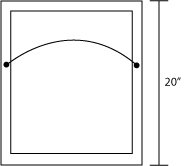If you’re an artist, chances are someone has said, “What is your painting about?” or, “Explain this photograph to me,” or, “What the hell is that brown thing?”
It’s human nature to try to make sense of what we see. Writing an artist’s statement is a great way to help your viewers understand what they’re seeing. Even if you never share your written statement with anyone, just taking the time to sit down and write it out will help you talk about your work more easily.
Keep it (fairly) short
Write enough so that you can get your ideas across, but keep it to one page or less. Nobody wants to read a multi-paged artist’s statement. That’s what manifestos are for. Conversely, you might think your one-sentence artist’s statement (“I paint landscapes that are pretty”) is funny and ironic, but you might also come across as a gi-normous smart-ass.
Keep it simple
Avoid academic or flowery language. Even if you’re in grad school, your viewers will most likely include some non-artists and non-academics, so you don’t want to alienate them with sentences like, “I find this work menacing because of the way the subaqueous qualities of the figurative-narrative line-space matrix threatens to penetrate the essentially transitional quality.”*
I know. I read New American Paintings. That’s the way everybody in grad school (or who’s been to grad school) writes artist’s statements. Well, it’s just wrong. Don’t do it. Save all those big words for your prospectus or the paper you're going to present at CAA. They live for that.
Where to start
Think about a painting, photograph, or exhibit that you’ve seen that you loved, hated, or didn’t understand. What did you want to know about it? Did you wonder what materials the artist used? Why did she paint clowns? Why were the clowns so scary? Was the artist traumatized by a clown? How did she decide to combine photographs and painting? What is her process? Etc…
Then think about a time when someone was viewing your work and asking you questions. What did they want to know? What were they most curious about?
When I wrote my very first artist’s statement, I sat down and just imagined that I was talking to a non-artist friend about my work.
It's also really helpful to collect artist's statements when you go to shows. Or surf the internet and read the statements on artists' websites. You'll see examples of both good and bad statements. Be inspired by the good ones and know that you can do much better than the bad ones.
Start with the “Why?”
Why did you choose your particular subject matter or imagery? You can mention influences (artistic or otherwise), inspirations, and past experiences that led you to your subject. Some artists often refer to the work of other artists that inspired them. Others might be influenced by media or popular culture. Still others might have been traumatized by clowns… It doesn’t really matter how you came to your subject matter, but the viewer will be interested in knowing why you chose it.
Then talk about the “How?”
Most viewers will want to know something about your materials or your process, especially if the materials or processes are unusual. It’s not necessary to write a step-by-step guide to the watercolor process, or list every chemical that you used to process your photographs. You might just mention that you use watercolors and that you were drawn to them for their unpredictable nature and their transparency. Or you could briefly describe the process used to create cyanotypes and what made you love it. And if there’s an unusual technique or material, mention that. And seriously, what is that brown thing?
Act like you know what you’re doing
Avoid phrases like, “I want to…” or, “I’m trying to…” or, “My intention is…” Just say what you’re doing: “I expose the gritty underbelly of urban life…” or, “These paintings explore the wonders of nature and the beauty of our world…” Don't be wishy-washy about it.
Not so much “me,” “my,” and “I”
It’s hard to do, but try to avoid using the words “me, my, and I,” repeatedly. It’s annoying to read a whole page of sentences that start with “I.”
Update it
If you’re a working artist (creating new work often) then you’ll need to look at your statement every now and then to make sure that it still reflects your current work. A good rule of thumb is to update it every time you ship work off to a show. This keeps the statement fresh and helps you to prepare to talk about your work.
Multiple statements
Most artists only have one statement that they update every few months or as their work changes. You might have multiple bodies of work that require different statements, especially if you work in different mediums.
It’s so useful
Once you have a good artist’s statement, it will come in so handy in so many different ways:
1. Writing it will prepare you to talk about your work in formal or informal settings.
2. Frame it and hang it on the wall near your artwork to explain the work when you’re not there.
3. Use it as a basis for a press release when you’re promoting your show.
4. A reporter might use it to write a story about your show (if that’s all they have to go by).
5. Send it along with slides when you approach galleries.
6. Post it on your website along with images of your work.
7. Make your mom read it so she will finally understand.
* generated using the CRAP Generator – a grad school “must-have”












